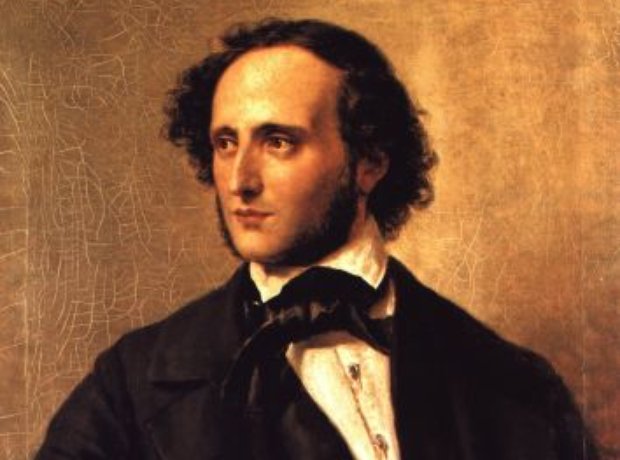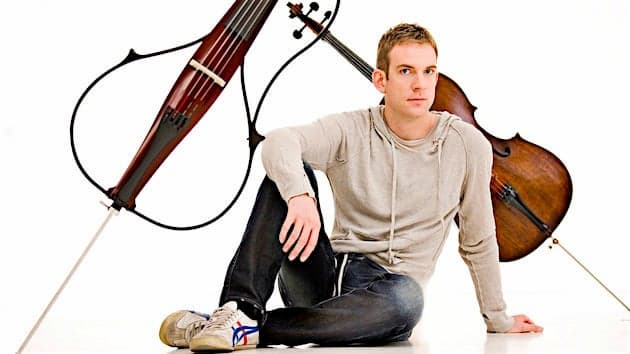Although Felix Mendelssohn predated Brahms, his cello music is on the cusp of romanticism, bridging the classical and the romantic periods of music. He wrote two cello sonatas, No. 1 in B-flat Op. 45, and No. 2 in D Major Op. 58 from 1842, Variations Concertantes Op. 17, and Song Without Words for cello and piano Op. 109. These pieces are colorful and dramatic at times.

Felix Mendelssohn
Mendelsohn’s oeuvre for cello is significant in that he was following in the footsteps of Beethoven—writing for the cello in a new way. Mendelssohn Opus 17 Variations Concertantes was written for Paul, his younger brother who played the cello. It is full of invention and contrast despite being only 12 minutes. The Sonata in B-flat from 1839, a three-movement work, also intended for Paul, opens with a sunny Allegro Vivace. But soon, as is typical for the composer, the music turns tempestuous. A brilliant piano partner is needed for the virtuosic passagework, and the movement concludes with a flourish. The andante is delicate and the finale is a virtuoso showpiece.
Felix Mendelssohn: Cello Sonata No. 1 in B-Flat Major, Op. 45
Antonio Meneses and Gérard Wyss

Antonio Meneses
Cellist Antonio Meneses with pianist Gérard Wyss are a worthy pair. Meneses is spare with his vibrato and leans towards a more classical approach. The delicacy of the piece is brought to the fore.
Felix Mendelssohn: Cello Sonata No. 1 in B-Flat Major, Op. 45 – I. Allegro vivace (Antonio Meneses, cello; Gérard Wyss, piano)
Lynn Harrell and Bruno Canino
With pianist Bruno Canino, cellist Lynn Harrell plays the first movement quite a bit slower and more romantically. ( it is played a full minute slower than both Meneses and Moser.) This pair brings out an entirely different impression of the music. If Meneses and Wyss play in a contemplative way, Harrell and Canino play more with a heart-on-your-sleeve approach.
Felix Mendelssohn: Cello Sonata No. 1 in B-Flat Major, Op. 45 – I. Allegro vivace (Lynn Harrell, cello; Bruno Canino, piano)
Johannes Moser and Alasdair Beatson

Johannes Moser
Another performance played with panache is the one with cellist Johannes Moser and the fine pianist Alasdair Beatson. The andante is understated and delicate, and the last movement marked Allegro assai, is performed with tenderness, ferocity, and expansiveness. There are gorgeous touches amidst the flurry of virtuosity.
Felix Mendelssohn: Cello Sonata No. 1 in B-Flat Major, Op. 45 – II. Andante (Johannes Moser, cello; Alasdair Beatson, piano)
Felix Mendelssohn: Cello Sonata No. 1 in B-Flat Major, Op. 45 – III. Allegro assai (Johannes Moser, cello; Alasdair Beatson, piano)
Felix Mendelssohn: Cello Sonata No. 2 in D Major, Op. 58
The Sonata in D from five years later in 1843 and dedicated to Count Mateusz Wielhorski, a Russian Army colonel and professional cellist, is a more mature work. Mendelsohn himself performed the piece in 1845 with the famed cellist Alfred Piatti. This sonata in the key of D major is performed more often. This sonata has four movements. Once again, the opening is sunny but the Allegro Assai vivace quickly moves from color to color, and mood to mood. Mendelssohn includes techniques such as tremolo in the cello, and there are countless numbers of notes for the pianist to play, but the composer treats us to numerous lovely melodies. Once you hear the slow movement to this sonata, an Adagio, the cello line almost recitative-like, you’ll be convinced this full-throated, plaintive, and deep music is the precursor to the romantic cello writing which followed.
János Starker and György Sebök

János Starker
I think I’ve worn grooves into my copy of the Mercury recording of János Starker and György Sebök playing the D Major Sonata. It’s effortless, stunning playing. The first movement, although brisk, feels unhurried, and the interpretation captures the lightness that we typically associate with Mendelssohn. Sebök’s shimmering undulations in the piano never feel heavy or get in the way of longer lines. The gentle second movement Allegretto Scherzando impresses with its buoyancy and moments of mystery.
Felix Mendelssohn: Cello Sonata No. 2 in D Major, Op. 58 – I. Allegro assai vivace (János Starker, cello; György Sebök, piano)
Felix Mendelssohn: Cello Sonata No. 2 in D Major, Op. 58 – II. Allegretto scherzando (János Starker, cello; György Sebök, piano)
Johannes Moser and Alasdair Beatson
Johannes Moser and Alasdair Beatson’s rendition is lovely too. Moser plays more romantically with a full vibrato and a luscious tone, and I feel the piano lines are more present here. The first movement is quite brisk but there are some freedoms later in the movement. Moser plays the adagio with a full-throated and passionate sound. The freedoms of this recitative-like movement sound pensive and in places the two artists take liberties. And the last movement in a breathtaking tempo, sparkles. Some passages are tempestuous, reminding me of what we call the late 18th-century German literary movement, Sturm und Drang or “storm and stress” a synonym for turmoil depicting the high and rousing emotion we hear in this performance.
Felix Mendelssohn: Cello Sonata No. 2 in D Major, Op. 58 – III. Adagio (Johannes Moser, cello; Alasdair Beatson, piano)
Felix Mendelssohn: Cello Sonata No. 2 in D Major, Op. 58 – IV. Molto allegro e vivace (Johannes Moser, cello; Alasdair Beatson, piano)
I had to compare Luise Adolpha Le Beau’s Cello Sonata Op. 17 which is also in D major published in 1883 not long after Mendelssohn. A concert pianist, music critic, and composer, Le Beau studied with Clara Schumann and this work also has the exuberance, romance, and melodiousness of the Mendelssohn works. The elegiac slow movement, andante tranquillo, displays the lustrous cello sound taking full advantage of the A-string. You’ll see the Allegro vivace evinces compositional techniques that Mendelssohn renders, including a dramatic piano part.
Luise Adolpha Le Beau: Cello Sonata in D Major, Op. 17 (Thomas Blees, cello; Maria Bergmann, piano)
These lovely works take us just to the brink of the Romantic era when the cello music becomes more expressive, utilizing more of its extended range, and increasing the popularity of composing for the instrument.
For more of the best in classical music, sign up to our E-Newsletter
